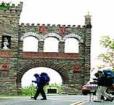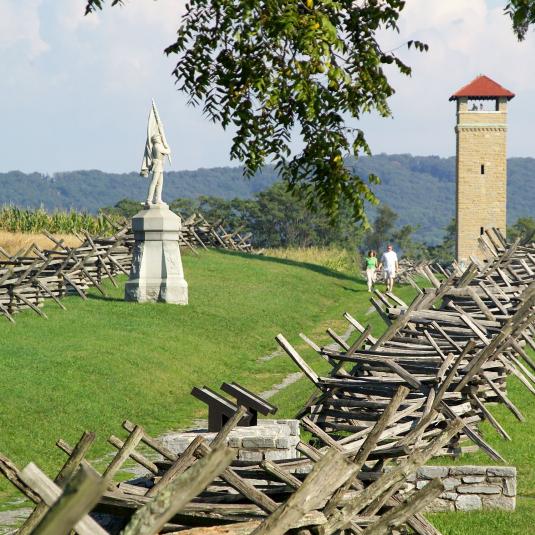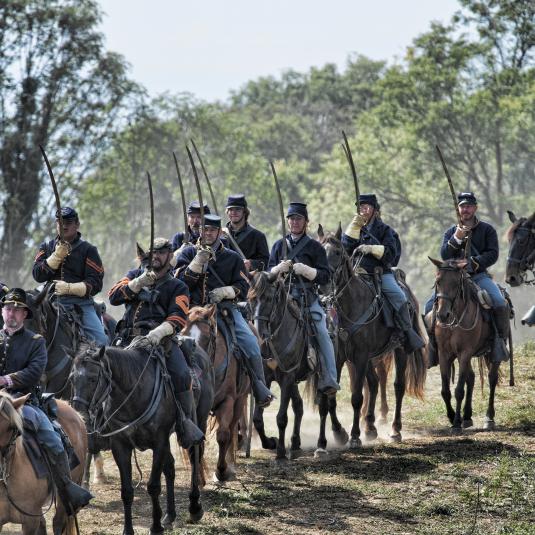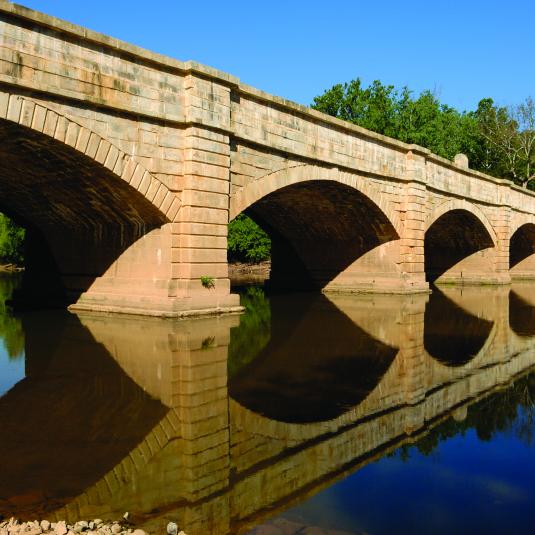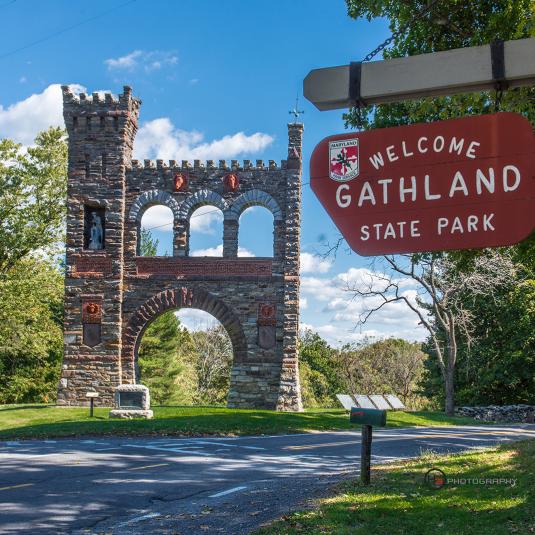Scenic Byways Antietam Campaign
A key turning point in the Civil War, The Battle of Antietam took place on Maryland soil, as Confederate soldiers crossed the Potomac River and clashed with Union forces in the sleepy town of Sharpsburg.
The picturesque Burnside Bridge at Antietam National Battlefield, the scene of intense fighting on September 17, 1862, holds the namesake of Federal Gen. Ambrose Burnside.
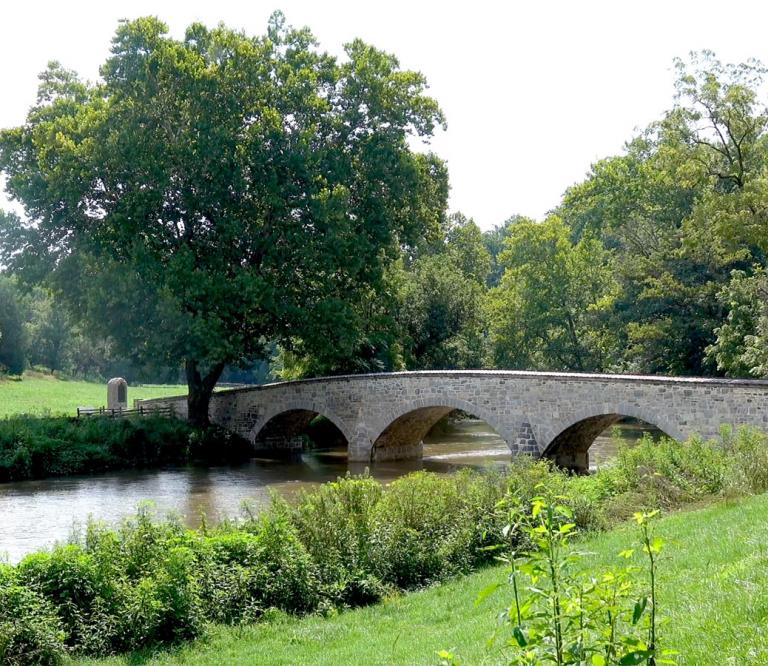
Number of Miles: 126 Miles
Drive Time: 3-4 Hours
Best Done in 2-3 Days
Best for: History Lovers, Families, Outdoor Adventure Enthusiasts, Foodies
Open for Exploration
In September 1862, General Robert E. Lee moved his Confederate army into Maryland, hoping that a military victory on Union soil would gain foreign support for the Southern cause. Lee’s ensuing campaign came to a head with the Battle of Antietam.
White’s Ferry to Frederick
Including MD 107, MD 109, MD 28, MD 355, MD 85, MD 80 & I-70
Confederate soldiers forded the Potomac River and entered Maryland near White’s Ferry. Cavalries then clashed in Poolesville, which was no stranger to Civil War action: In 1861, Union troops assembled here before being ferried into Virginia for the Battle of Ball’s Bluff, and in 1863, Confederate horsemen stormed through on their way to Gettysburg, Pa. Civil War exhibits are found inside the circa-1793 John Poole House.
You’ll encounter several options to enjoy the outdoors early on this Byway. Take a slight detour on Route 28 (Dickerson Road) to stretch your legs in Monocacy River National Resources Management Area, which has 1,800 acres of natural areas and farmlands along the Monocacy River open for hiking, fishing and horseback riding. Or follow Route 85 (Buckeystown Pike) to tackle the 1282 foot Sugarloaf Mountain and stop for a bite at The Comus Inn. Just off MD 355, Little Bennett Regional Park has a campground, a playground, more than a dozen historic sites and 25 miles of scenic natural surface trails.
Back on the Byway, travel north to the Monocacy National Battlefield. Well known as the site of the July 1864 conflict dubbed “The Battle that Saved Washington,” Monocacy also played a key role during the Campaign of 1862. Ask at the battlefield visitor center for details about Lee’s “Lost Orders,” which were found in this area by a Federal private and given to Union Gen. George McClellan prior to the battle at Antietam. You can download an audio driving tour of the site in advance of your visit.
Within the battlefield, Best Farm comprises the southern 274 acres of what was originally a 748-acre plantation known as L'Hermitage. The plantation was once home to the Vincendière family, one of the largest slaveholding families in Frederick County. Information about the battle and about slavery at the site can be found on wayside panels and in the visitor center.
Frederick — the site of a 50-block historic, cultural and commercial district — has both the National Museum of Civil War Medicine and the Barbara Fritchie House. Fritchie was a 95-year-old widow who, as poet John Greenleaf Whittier proclaimed, defiantly waved an American flag from her window as Confederate troops moved through town.
(continued below)
South Mountain to Sharpsburg
Including US 40 Alt, US 40, MD 17, MD 67 & MD 34
From Frederick, follow the Historic National Road Byway beyond Braddock Heights before branching off toward South Mountain Battlefield State Park. Intense fighting occurred here three days prior to Antietam, with some of the wounded, including future President Rutherford B. Hayes, removed to homes and churches in Burkittsville and Middletown. Earn bragging rights for hiking on the Appalachian National Scenic Trail with a .2 mile walk to the top of South Mountain, where you can see the rugged stone tower erected by the citizens of Boonsboro in 1827 to honor George Washington in Washington Monument State Park. Or, take a sidetrack along Route 17 to honor fallen journalists at the majestic Civil War correspondents arch in Gathland State Park.
Back on the Byway, dig deeper into local Civil War stories at the Boonsboro Museum of History or take a break from history and hiking to explore a hidden world at the dazzling Crystal Grottoes Caverns.
As dawn broke on September 17, battle lines were drawn near Antietam Creek — Lee’s 41,000 soldiers faced a Federal army twice that size. By dusk, Union forces held the field, but more than half of the 23,000 casualties wore blue, not gray. Union dead were buried at the Antietam National Cemetery, with many Confederate soldiers laid to rest in nearby Hagerstown.
A thorough tour of the beautifully preserved Antietam National Battlefield— from Burnside Bridge to “Bloody Lane” — can take several hours when must-see visits to the Pry House Field Hospital Museum and Newcomer House are included. Also plan to stop at the farmhouse where abolitionist John Brown planned a pre-Civil War raid of an arsenal in Harpers Ferry, W. Va. The raid, though unsuccessful, inspired many anti-slavery groups. On the way to the farmhouse, a detour to historic Harper’s Ferry provides an opportunity to get out of the car and learn more about John Brown and the raid.
A few days after the cannons fell silent at Antietam, President Abraham Lincoln visited the battlefield. Then on September 22, Lincoln issued his preliminary Emancipation Proclamation, a major step toward the prohibition of slavery. One of the greatest ironies of the Battle of Antietam is that the Emancipation Proclamation did not free the 87,000 people who were enslaved in Maryland, including those who lived on the battlefield and in the town of Sharpsburg. Although a slave holding border state, Maryland was not in rebellion against the Union, thus the Emancipation Proclamation did not free enslaved Marylanders. It would take a new Maryland state constitution in 1864 to end slavery in the state.
A final stop at Tolson’s Chapel in Sharpsburg provides an opportunity for quiet reflection on the war’s end and the promise and pain of Reconstruction for the four million newly freed people and for all Americans. The chapel is a log-and-frame church built by an African American congregation in 1866 that was later used as a school staffed by teachers from the Freedmen’s Bureau. In an era when cemeteries were still segregated, the congregation established their own graveyard on the property, where Union Veterans and many souls who witnessed the Battle of Antietam now rest.
Trip Tips
Stretch your legs and explore history like a Union soldier. This byway has countless opportunities to get out of the car and explore the lush Western Maryland landscape including trails at: Monocacy National Battlefield, Dickerson Conservation Park, South Mountain Battlefield State Park, Little Bennett Regional Park and others.
Uncork your sense of adventure to savor local flavors at Western Maryland’s hidden gem wineries nestled within the region’s rolling hills. Click here for a list that will lift your spirits.
Enjoy Every Season
Spring/Summer
Spring/Summer
- Pedal through history on the Antietam Battlefield Driving Tour and bring the past to life with the audio podcast along the way
- Hike the Appalachian Scenic Trail past the Gathland War Correspondents Arch
- Enjoy the spring vines with a glass of South Mountain Chardonnay at Antietam Creek Vineyard
- Make a splash with a raft or tube down the scenic Potomac River with River & Trail Outfitters
- Grab a friend and go tubing down Antietam Creek
- Take a subterranean adventure filled with stunning natural formations at Crystal Grottoes Caverns
- Taste the famous homemade ice cream at Nutter’s Ice Cream
- Take in the glorious sounds of the Independence Day Concert at Antietam
- Photo Caption: Tubing on the Potomac River with River & Trail Outfitters
Fall/Winter
Fall/Winter
- Attend a program or tour at Antietam National Battlefield during the Anniversary of the Battle of Antietam on September 17
- Enjoy a vibrant celebration of agriculture, entertainment, and community at The Great Frederick Fair
- Make the trek to Washington Monument to leaf peep and see sweeping views of the Middletown Valley
- Hike scenic Sugarloaf Mountain, then unwind with wine tasting at the nearby Sugarloaf Mountain Vineyard
- Witness the awe-inspiring Antietam Illumination — where thousands of candlelit lanterns honor the fallen and bring history to life
- Sail through the Winter Solstice at Carroll Creek Park to see a spectacular light display (Frederick)
- Attend a program at a historic site or museum during Frederick County’s Museums by Candlelight
- Photo caption: The Illumination at Antietam National Battlefield
















